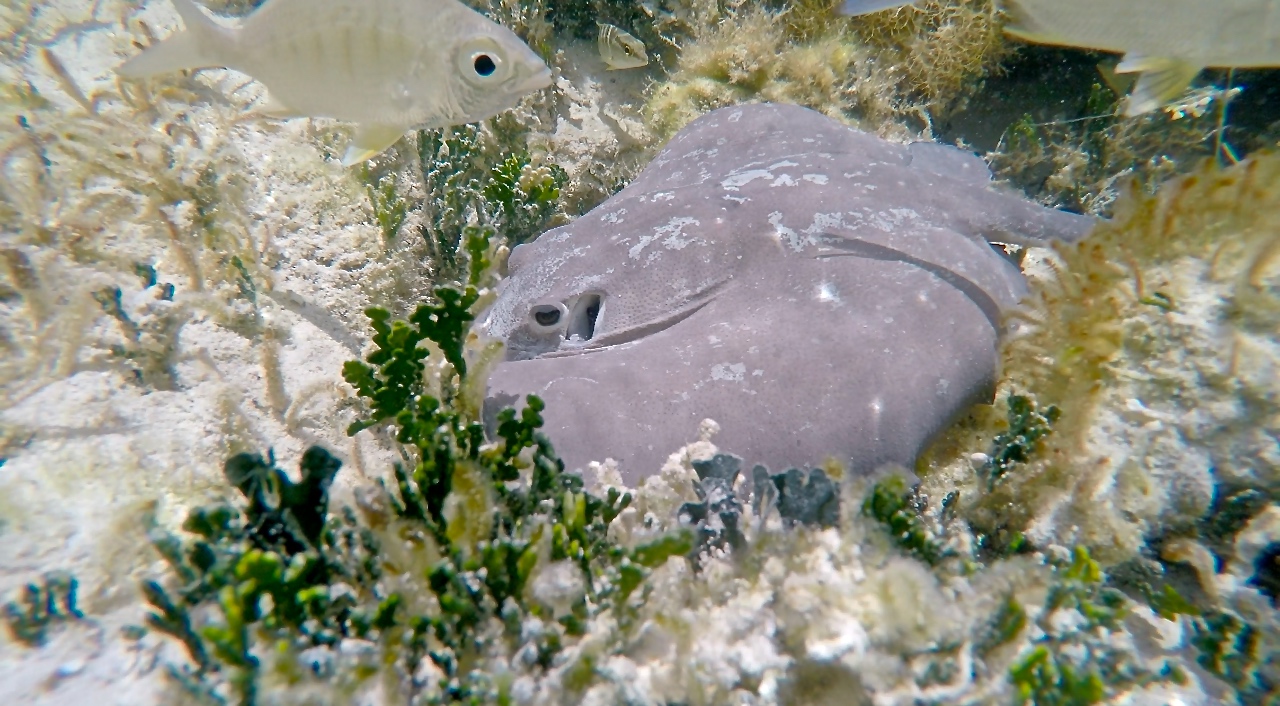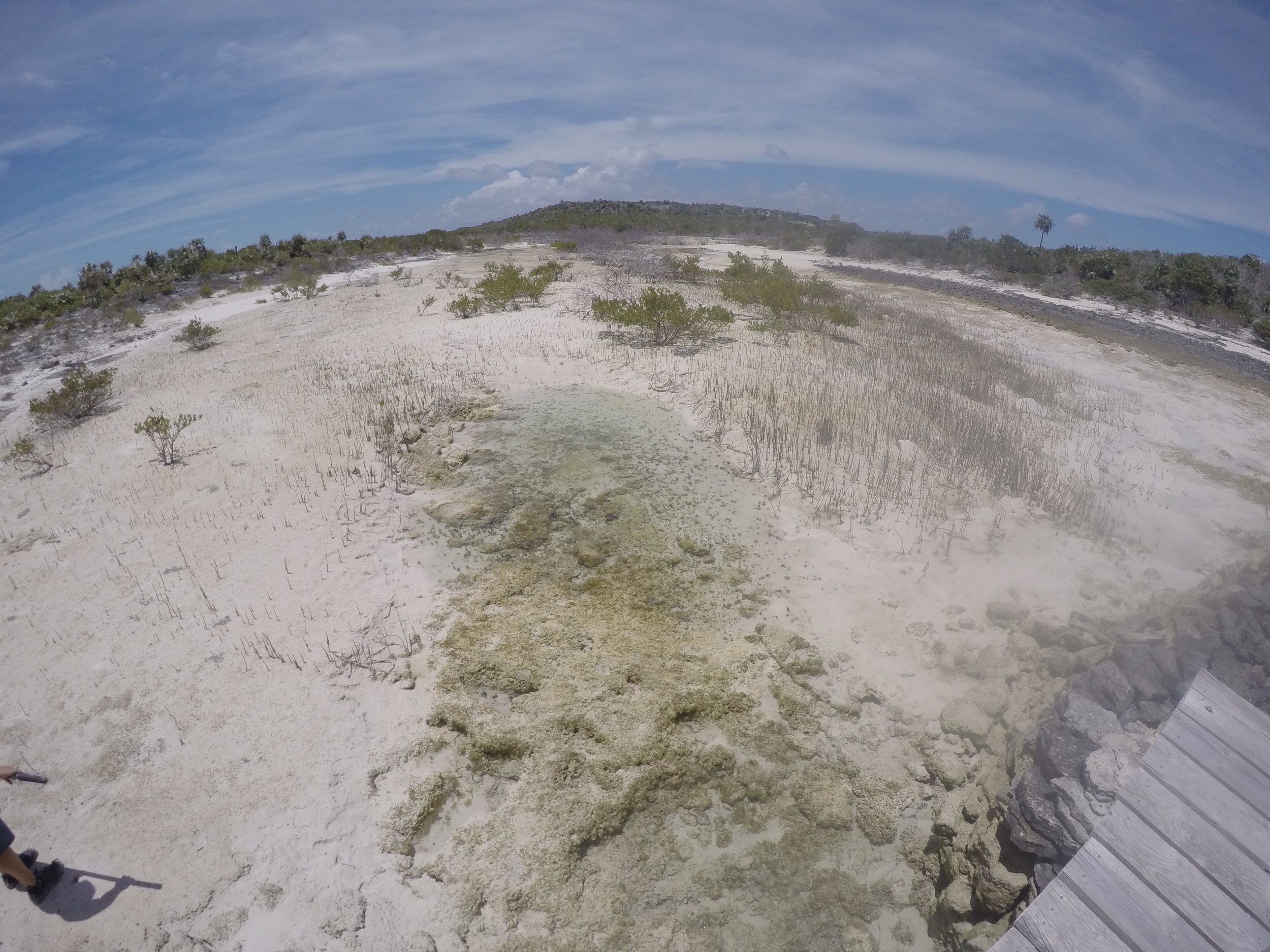 Recently, the Cape Eleuthera Institute’s Stingray Research Group mounted its final expedition to remote cays in the Exumas Islands, to finalize the collection of genetic information from the rare, elusive and recently ‘re-discovered’ Caribbean whiptail stingray, Himantura schmardae. Led by Dr. Owen O’Shea, the team comprised of interns, Rob Hallinan and Miguel Furtado, Newcastle University Graduate Student, Dan Montgomery and Education Program leader, Stan Burnside. The aim of this particular study is to assess the genetic connectivity of this batoid across multiple spatial scales, yet restricted temporal scales. Therefore, generations of parentage and sibling relationships are examined, rather than analyzing the connectivity through an evolutionary perspective.
Recently, the Cape Eleuthera Institute’s Stingray Research Group mounted its final expedition to remote cays in the Exumas Islands, to finalize the collection of genetic information from the rare, elusive and recently ‘re-discovered’ Caribbean whiptail stingray, Himantura schmardae. Led by Dr. Owen O’Shea, the team comprised of interns, Rob Hallinan and Miguel Furtado, Newcastle University Graduate Student, Dan Montgomery and Education Program leader, Stan Burnside. The aim of this particular study is to assess the genetic connectivity of this batoid across multiple spatial scales, yet restricted temporal scales. Therefore, generations of parentage and sibling relationships are examined, rather than analyzing the connectivity through an evolutionary perspective.
After crossing the Exuma Sound, the team first arrived at Little Creek in Guana Cay where the first whiptail stingray was located – a tiny female in shallow water as the tide ebbed. A further three more were sampled from Sampson Cay to the north, making the first day a success. The team was able to select their very own island for the night’s camping before readying the equipment for day two of three. The second day was even more successful; the team found and caught eight of these stingrays as they continued to move north. Three were found in the mangroves of Pipe Cay, two within the Compass Cay marina, and three found from a dry creek at Warderick Wells Cay. The little rays were the smallest of the project so far (228, 229 and 232 mm wide) but were also located in very small, very hot tidal pools scattered throughout a desert dry Banshee creek. Day three was more challenging as the team investigated several creeks from Shroud and Hawksbill Cays, that appeared promising, indicated by the presence of dozens of ray feeding pits. However, no whiptails were seen. With only two samples left to meet the minimum requirement for sample size, the team explored the flats of Highbourne Cay and the mouth of Ship Channel Cay where three more whiptail stingrays were sampled, and therefore bringing the total for the trip to 15, five more than our target.
This study is the first sine 1968 to document this species of stingray in The Bahamas, and a manuscript detailing their contemporary distribution in The Bahamas is currently under review. Now, with genetic information pertaining to 68 individuals sampled throughout the course of this study, spanning from Hummingbird Cay in the southern Exuma Cays to Hartford Creek, in the east end of south Eleuthera, Dr. O’Shea and his team can begin to analyze the relative relationships among these stingrays and determine their connectivity, along with possible migratory corridors, adding to the paucity of information not only about this species, but the habitats that support them. Interestingly, on this voyage, no mature stingrays were seen, potentially indicating a partitioning of spatial resources between juveniles and adults. Where juveniles were more often seen in shallow creek systems, larger adults tended to occupy areas of deeper water, potentially highlighting the importance of creeks as nursery grounds for juvenile Caribbean whiptail stingrays. Continuing this research this summer, Dr. O’Shea will begin to assess the significance of these shallow, warm-water creek systems on the life-history of these juvenile Caribbean whiptail stingrays.

